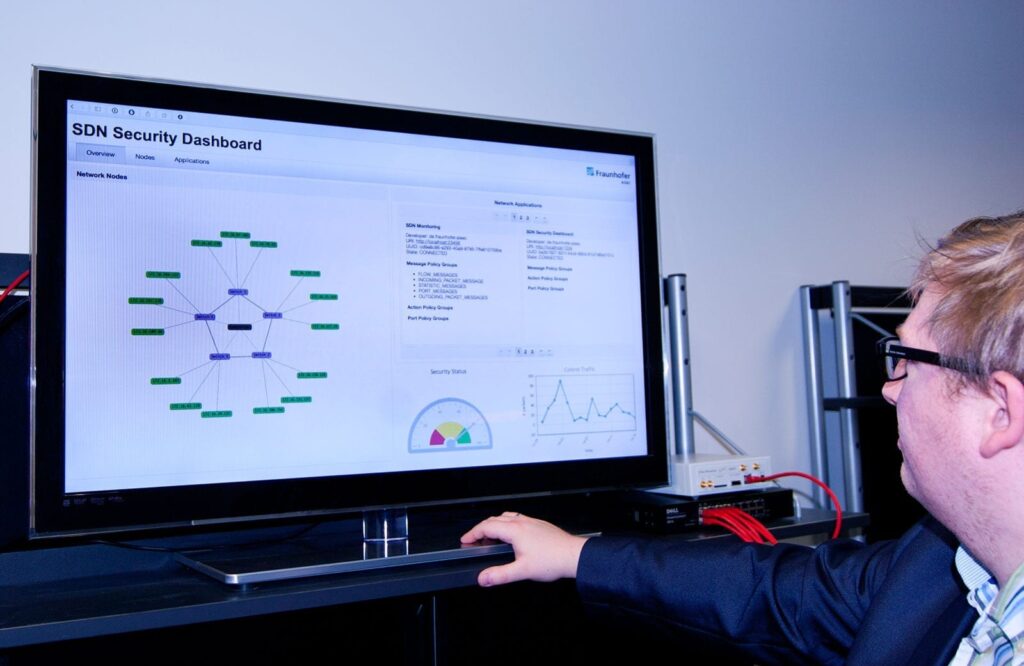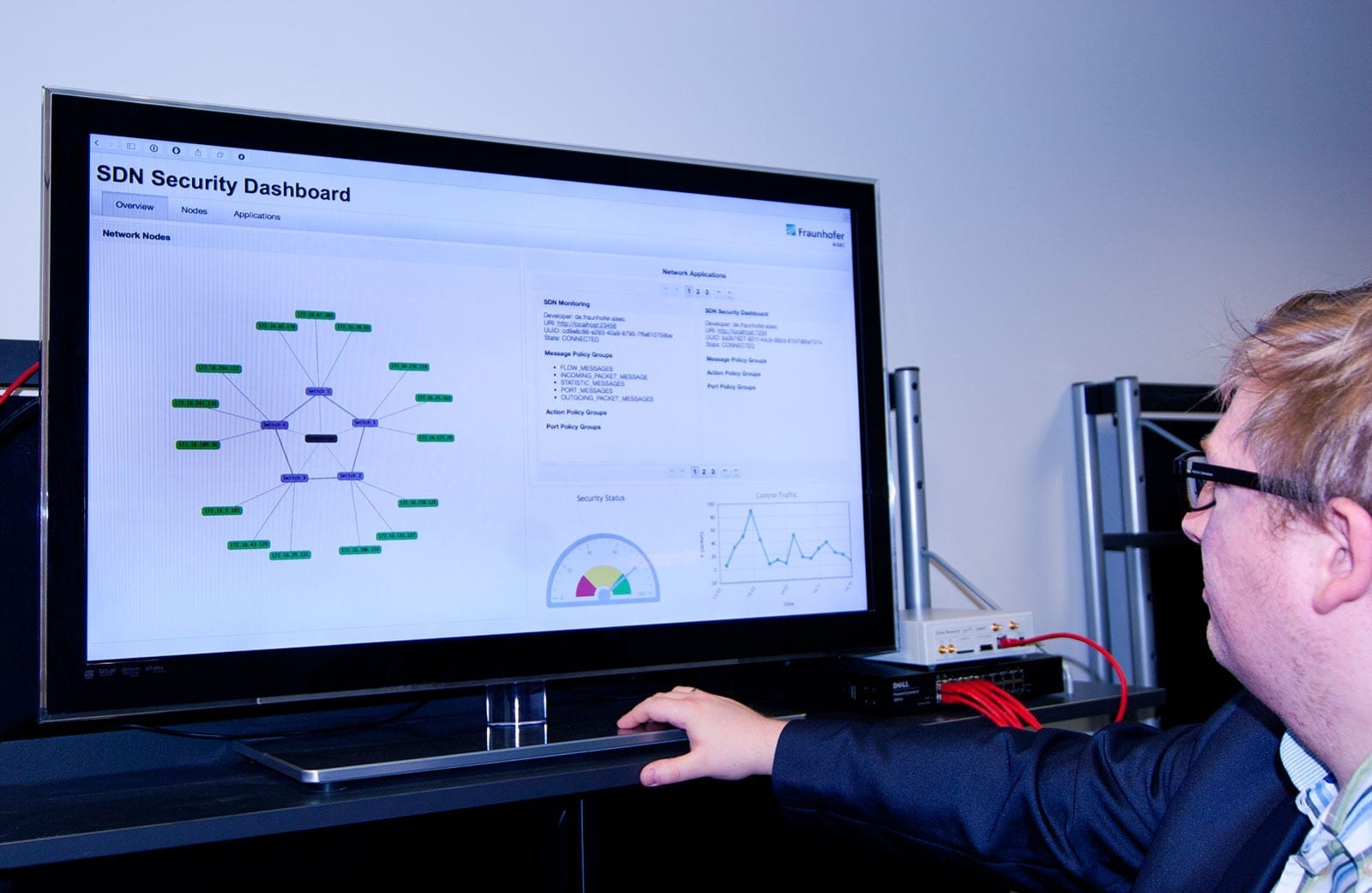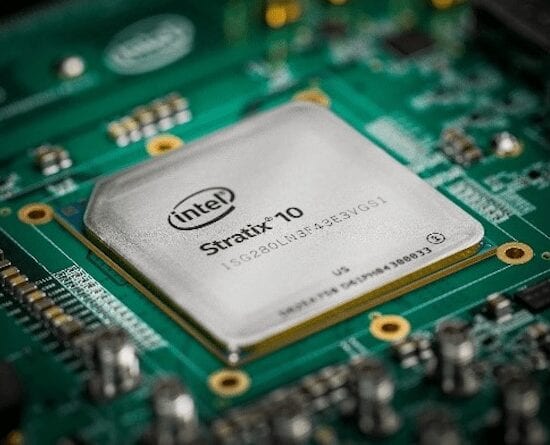
Fraunhofer AISEC
Company networks are inflexible – they are made up of many components that require a good deal of effort to be connected together.
That’s why networks of the future will be controlled by a central unit. However, this makes them a target for hackers. At CeBIT, Fraunhofer researchers will demonstrate how to protect these future networks.
oday’s company networks comprise hundreds of devices: routers for directing data packets to the right receiver, firewall components for protecting internal networks from the outside world, and network switches. Such networks are extremely inflexible because every component, every router and every switch can carry out only the task it was manufactured for. If the network has to be expanded, the company has to integrate new routers, firewalls or switches and then program them by hand. That’s why experts worldwide have been working on flexible networks of the future for the last five years or so, developing what is known as software-defined networking (SDN). It presents one disadvantage, however; it is susceptible to hacker attacks.
Researchers from the Fraunhofer Institute for Applied and Integrated Security AISEC in Garching, near Munich, will be showing how to make SDN secure at the CeBIT trade fair in Hannover, March 16-20. A demonstrator at the Fraunhofer exhibition stand (Hall 9, Booth E40) will show how SDN and all related components can be monitored. One of these components is visualization software, which displays the network’s individual components and depicts in real time how the various applications are communicating with the controller. “We can show how software influences the behavior of different components using the controller, or, in the case of an attack, how it disrupts them,” says Christian Banse, a security expert at AISEC.
But how exactly does SDN work, and why is it so vulnerable to attack? “In the future, the plan is for a central control unit to tell the many network components what to do. To put it simply, routers, firewalls and switches lose their individual intelligence – they only follow orders from the controller,” says Banse. This makes a network much more flexible, because the controller can allocate completely new tasks to a router or switch that were not intended when the component was manufactured. Plus, the tedious task of manually configuring components during installation is eliminated because components no longer need to be assigned to a specific place in the network – the controller simply uses them as needed at the moment.
The controller is a popular target for hackers
Manufacturers have begun offering the first routers and switches that are SDN-compatible and have the necessary flexibility. “With all the hype surrounding the new adaptability made possible by a central control unit, SDN security has been neglected,” warns Banse. “That’s why we’re developing solutions to make SDN more secure from the outset, before such systems become firmly established.” In the future, networks will be controlled solely by a central controller – Banse sees this as a problem, because it might provide the perfect loophole for attackers to access the entire network.
Read more: Ensuring security for networks of the future
The Latest on: Network security
[google_news title=”” keyword=”Network security” num_posts=”10″ blurb_length=”0″ show_thumb=”left”]
via Google News
The Latest on: Network security
- 3 Key Business Areas Cybersecurity Falls Shorton April 27, 2024 at 8:35 am
There's no one path to business success, but you can take this important step to mitigate cyber risk and unleash the power of innovation, partnerships, and customer relationships: rethink network ...
- Performing an ATM Security Auditon April 26, 2024 at 7:54 am
In preparing for an ATM security audit, auditors will need to prioritize understanding core governance and business processes impacting ATM management.
- 5 things to know for April 26: Trump trials, University protests, Harvey Weinstein, TikTok ban, Starlineron April 26, 2024 at 3:59 am
A multi-day storm threat is set to impact millions of people in the central US through the weekend. Forecasts show parts of Texas, Missouri and Iowa are in the direct pathway of multiple rounds of ...
- The Impact of Cloud Computing on Zero Trust Network Adoption and Implementationon April 26, 2024 at 2:36 am
In today's fast-changing tech world, cloud computing and zero-trust network security are becoming increasingly popular ...
- Network Security Firewall Market CAGR of 22.90%, Ethnography Techniques Unveiling the Secrets of Consumer Behavioron April 25, 2024 at 3:02 pm
Check out the latest research report from Report Ocean titled “Network Security Firewall Market: Trends Analysis from 2024 to 2032”. This report delivers accurate economic projections, worldwide ...
- Zain KSA and Enea announce signaling overlay security technologyon April 25, 2024 at 9:14 am
This pilot will accelerate the technology innovation and deployment of next-generation signaling security solutions for complex and more sophisticated network security ...
- Zain KSA-Enea tie-up for a 'world-first' network security solutionon April 25, 2024 at 8:45 am
While Zain KSA will be the first to test the new technology, the pilot programme may be expanded to several other markets and customers. The trial, to commence in 2024, underscores both companies' ...
- Zain KSA and Enea to pilot network security innovationon April 25, 2024 at 7:55 am
Saudi Arabian operator Zain KSA and network security specialist Enea have announced a collaboration to pilot the world’s first mobile network signalling overlay technology, which, they say, ...
- Securing the edge: A new battleground in mobile network securityon April 22, 2024 at 5:03 am
Edge computing is now a reality that’s reshaping industries and transforming approaches to mobile network infrastructure, but failure to secure it can expose networks and data to cyber threats. Learn ...
- Advancing Cybersecurity: The Impact of AI and ML in Financial Network Securityon April 17, 2024 at 2:06 pm
The Impact of AI and ML in Financial Network Security By Seshagirirao Lekkala 17 Apr 2024 Introduction In the rapidly evolving landscape of financial services, network security has become a critical ...
via Bing News











